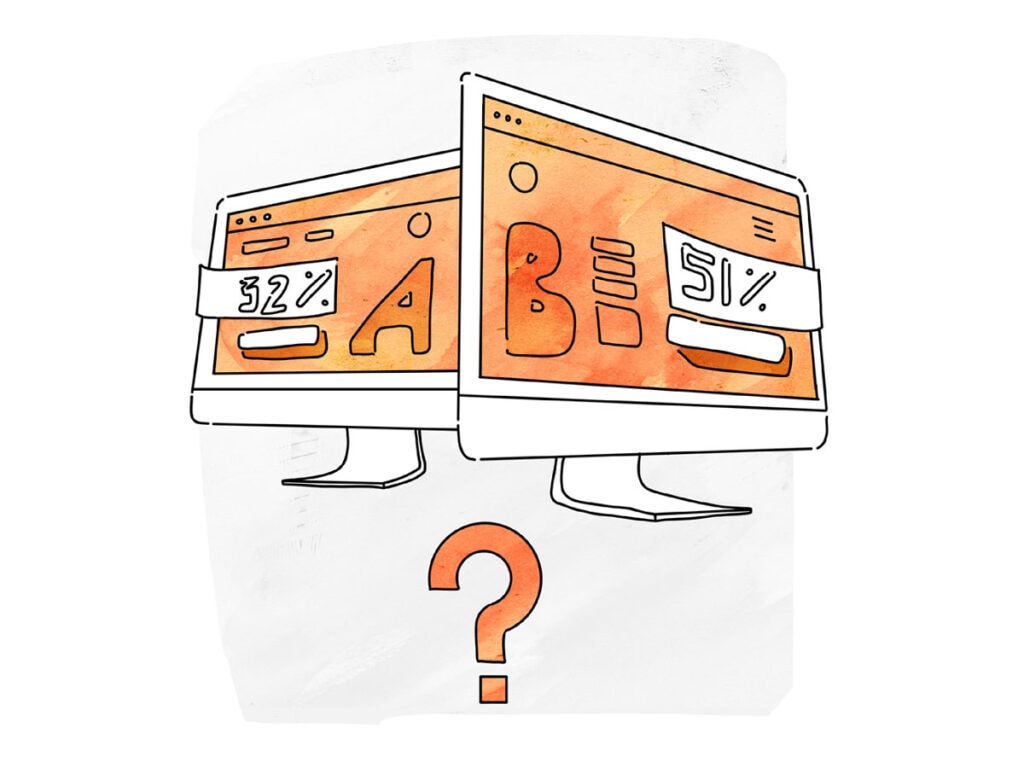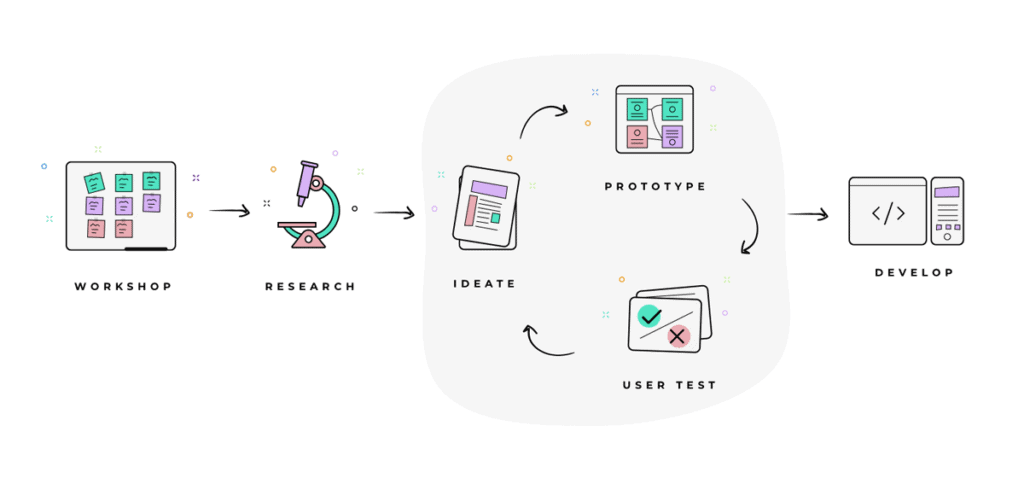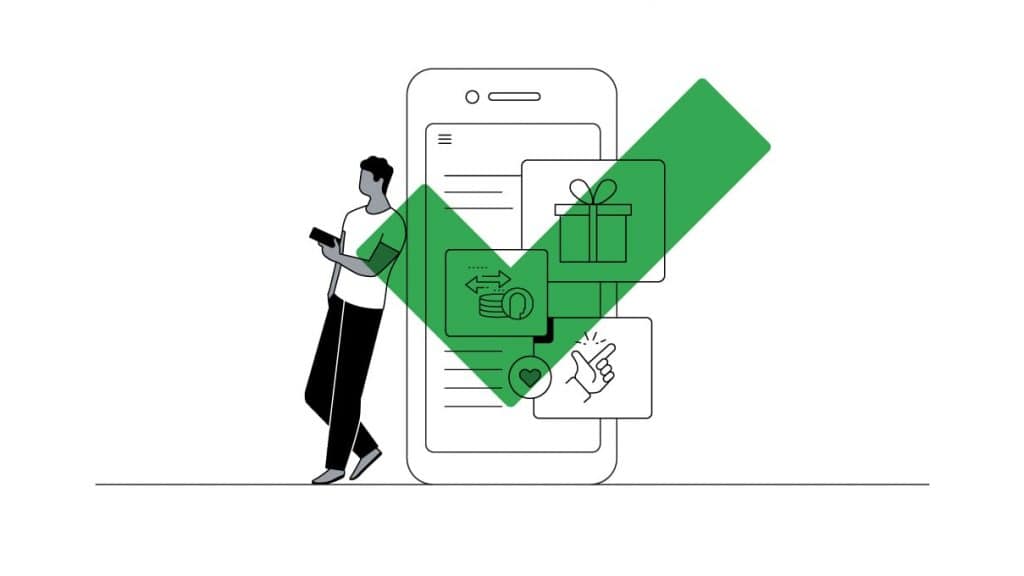A/B Testing in UX Design: Boosting User Experience and Engagement
Welcome to the world of UX design, where every pixel and click counts. As a UX designer, you know that user experience is everything and is not just about making things pretty. It's about creating a compelling and engaging experience that keeps users returning for more.
But how do you know if your design is working? That's where A/B testing comes in, the Swiss army knife of UX design. It's like a magic wand that allows you to test different variations of your design and find out what works best. And let's face it, who doesn't love a good magic wand?
So grab your hat and pull out your magic wand because today, we will explore how A/B testing can boost your user experience and engagement. But don't worry; we promise we won't turn anyone into a frog.
Table of Contents
What is A/B Testing in UX Design?

An A/B test is like a dating show for design elements. You're looking to find the perfect match for your users. You show them two options, and they get to pick which one they like better. It's a simple experiment where you randomly present two different design versions, say two other background images on a website, and see which one the user prefers.
It's like a beauty contest for your website or app, where two contestants compete to win the user's heart. And the winner gets the coveted prize – being implemented on your site. The loser goes home with nothing but a few clicks.
You can test just about anything with A/B testing. You can try the colour, size, and shape of buttons. You can test where to place buttons or call-to-action (CTA) copies. You can test the size and placement of images or illustrations.
But wait, there's more! You can even test different tones of voice for your copy. For example, try a friendly, conversational tone versus a more formal, authoritative manner. You can also test different form lengths, labels, and placement.
Think of A/B testing as your wingman in the world of design. It helps you find the perfect partner for your users. With A/B testing, you can create an online dating profile to make users swipe right. So, give A/B testing a try – you might find the love of your user's life.
How to Improve UX Design Through A/B Testing

Let's face it; when it comes to UX, it's not just about making things look pretty. It's about creating a delightful experience that makes users want to hug their screens. But how do you ensure that your app or website will be the one that gets all the hugs?
You could rely on user feedback alone, but let's be honest, users are fickle creatures. One day they love you; the next day, they're ready to toss you into the abyss of the App Store. That's where A/B testing comes in. It's like a relationship therapist for your app and your users. You can better understand what your users want by testing two options for your graphical user interface (GUI). It's like having a virtual focus group without awkward small talk and stale coffee.
Your app or website's success relies heavily on your sales conversions, and those conversions are directly tied to the user experience and UI design. So, instead of just wireframing your creation and hoping for the best, why not wireframe multiple options and A/B test them? It's like a game of design roulette, except instead of losing money, you're gaining insight into what makes your users tick.
By testing one element at a time, you can uncover even the most subtle differences between the pieces that make up your UI and how they relate to the user experience on all five planes. That's right; we said five planes. It's like UX design has its own airport now. But in all seriousness, by taking the time to A/B test and refine your UI design, you're setting yourself up for success. So, please grab a cup of coffee, put on some comfortable pants, and let's get testing!
The 5 Planes of UX Design
We're talking about the five planes of UX design:
- the surface plane,
- the skeleton plane,
- the structure plane,
- the scope plane,
- and the strategy plane.
It's like the five layers of a delicious UX cake.
But what exactly are these planes, and why should you care? Well, dear reader, the surface plane is all about visual design. It's what your users see and interact with, like the frosting on the cake. The skeleton plane is the underlying structure that supports the surface design, like the cake layers. The structure plane is the hierarchy and organisation of your plan, like how the cake is cut into slices. The scope plane is the breadth of your design, like how many people get to enjoy the cake. And finally, the strategy plane is the big picture vision for your design, like why you're baking the cake in the first place.
You may think, “That's all well and good, but how do I know which design is best for each plane?” That's where A/B testing comes in. You can determine which design is more effective and user-friendly by testing two options for each plane. It's like having your cake tasters tell you which frosting flavour is the most popular.
But don't get too excited and start randomly changing every element of your design without rhyme or reason. Each plane is interdependent and affects the others, like how the cake layers support the frosting. You can identify the changes that impact the user experience by testing one element at a time. It's like the scientific method but with fewer explosions (unless you're baking your cake in a chemistry lab, in which case, we can't help you).
So, the next time you're designing a new app or website, remember the five planes of UX design and the power of A/B testing. It's like baking a visually stunning cake that is delicious and satisfying for everyone who gets to taste it. So, grab your apron and start testing, and who knows, maybe one day you'll be known as the “Buddy Valastro” of UX design.
What can you A/B Test?

Ah, A/B testing. The UX designer's version of playing “eeny, meeny, miny, moe” with your design elements. But hey, if it helps improve the user experience, why not? So, what can you A/B test? Everything, my friend. One item at a time.
Let's start with input controls. Do you know those pesky little forms and input boxes make you want to pull your hair out? Yeah, those. A/B testing different designs for those can make a difference in the user experience. One scenario could have a drop-down menu for selecting the user's country of residence, while the other has a text box. Which one will make the user's life easier? Time to test and find out.
Next up, informational components. You know you want to share those little tidbits with your users. It could be a notification about a new feature or a little blurb about your company's history. A/B tests different designs for these components and sees which gets the most engagement. A bright yellow pop-up notification is more effective than a subtle little message in the corner.
Now, let's talk about navigation components. You know, those menus and links that help your users move around your website or application. You may have a traditional drop-down menu, but what if you tested a hamburger menu instead? Or you may have a long list of links, but what if you tried a grid layout with icons? Which one will make your users happier? Time to test and find out.
Lastly, let's talk about containers. No, not the kind you store your leftovers in, but the design element that holds similar or related contents. You may have a container for your user's profile information, but what if you tested a different layout? Maybe a tabbed interface or a grid layout would be more effective.
So, my fellow UX designers, feel free to A/B test everything—one item at a time. Who knows, maybe you'll discover a revolutionary new design element that will take the world by storm. Or perhaps you'll end up with many designs confusing your boss. Either way, it's worth a shot, right?
How much difference does getting the UI right contribute to the UX?

Survey respondents have reported that making your website easier to navigate can increase conversion rates by 18.5%. That's a lot of extra sales! So, what's the secret to achieving this magical conversion boost? Well, it's about making your website or app easy to use with understandable, enjoyable content.
But wait, there's more! Did you know other seemingly small design elements can also significantly impact user experience? That's right; it's time to A/B test white space, call-to-action (CTA) buttons, and page load speeds.
Let's start with white space. You might think that filling up every inch of your website with content and design elements is the way to go, but that's not always the case. White space, or the space between design elements, can make your website look cleaner and more professional. A/B tests different white space amounts to see what your users respond to best.
Next up, CTA buttons. These buttons encourage users to take action, such as “Buy Now” or “Sign Up.” A/B testing different designs and placements of these buttons can make a big difference in conversion rates. A bright red button may get more clicks than a subtle grey one or placing the button above the fold increases engagement. Time to test and find out!
Last but not least, page load speeds. Let's face it; no one has the patience to sit around and wait for a slow-loading website. A/B test different designs and optimisations to improve page load speeds and keep your users happy. Compressing images or optimising code may do the trick.
Target Audience Testing

Let's say you have an app that offers both an individual membership plan and a professional plan that costs a whopping $1,000 per month. These plans and app versions vary vastly, like a Mercedes and a Toyota.
To A/B test them separately, you must conduct each test within its target audience. So, test the free version with limited features in a focus group of low- to middle-income individuals requiring a straightforward app. And for the high-end, professional plan app designed for corporate use, you'd need to gather a focus group of high-level executives with deep pockets who require a feature-rich design to accomplish their work.
But, hey, the opinions of the two groups have no bearing on one another. They are two target audiences; their input should only apply to their app version. It's like asking a cat and a dog to agree on what's for dinner – just not going to happen.
That's why you need to conduct separate A/B testing for different levels of users. Just like you wouldn't give a toy car to a real car enthusiast, one app will not work for all users. You should test everything separately, from the interface colour combinations to sound and music options.
After all, you want to make sure your app is tailored to your audience, just like how you would tailor your jokes to the audience you're performing to. Because if you don't, you might as well serve them a plate of soggy pizza and overcooked pasta.
Testing Your App

A/B testing is like a science experiment for your website or app, but you get a better product instead of creating mutant monsters. And just like in science, you must test your designs as standalone products to ensure they work independently.
One way to do this is by including a snippet of test code in the code of each design. Think of it as putting a little spy in your app to gather information and send it back. It's like James Bond, but for A/B testing.
But don't worry; you don't need to be a tech genius to do A/B testing. There are plenty of digital tools to help you out. Some are great for setup, others for implementation, and some for analytics. Just be sure to pick the right tool for the job, or you might end up with a wrench instead of a hammer.
Google Analytics is an obvious choice for analytics, but Google Optimize is excellent for setting up and implementing tests. Visual Website Optimiser is perfect if you lack technical know-how, and Adobe Target and Maxymiser are great for targeting and rule-based testing.
But remember, the A/B tested element must work with all other aspects of your website or app. You can't just bolt on a new feature like a third arm and hope it works. It must integrate seamlessly with the rest of the product, like a third arm that can still wear a shirt.
And remember; that your users are all unique snowflakes who need different things. You need to provide options that suit each user, like a menu at a restaurant. You don't want to be in a restaurant serving only meatloaf and ketchup.
But be careful; you don't want to let users run wild like a pack of rabid dogs. You need to protect them from each other, like a bouncer at a club. Users should only be able to add others to chat rooms with permission, like a handshake agreement.
So, go forth and A/B test like a mad scientist. Remember, the goal is to create an app or website that makes every user happy. And that's no easy feat, but you can do it with the right tools and mindset.
Wrapping Up
In conclusion, A/B testing is a powerful tool that can help you create a user experience that truly resonates with your target audience. By testing different design elements and features, you can identify what works and doesn't and make data-driven decisions to improve your website or app.
But remember, A/B testing is not a one-time event. It's an ongoing process that requires constant monitoring and tweaking to ensure you deliver the best possible user experience.
So, let's embrace the power of A/B testing and create websites and apps that users will love. And who knows, maybe one day we'll even be able to A/B test our own lives – trying out different hairstyles, outfits, and even personalities until we find the one that truly suits us.
